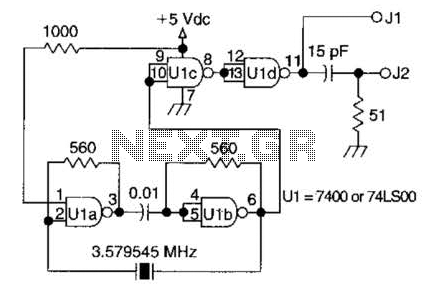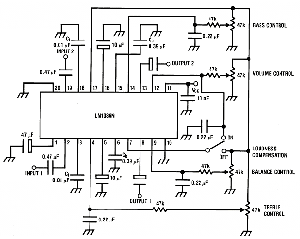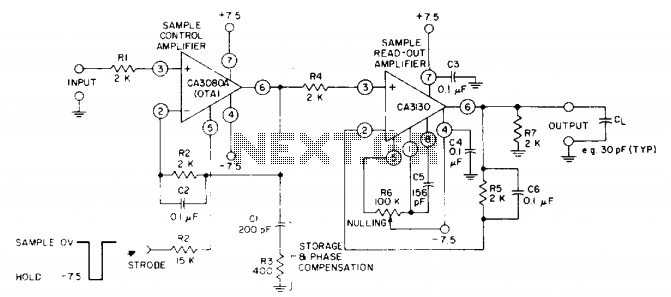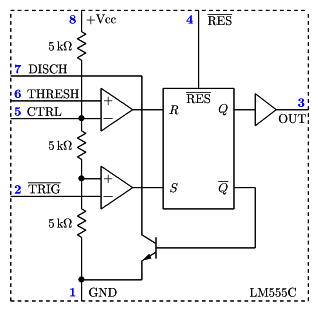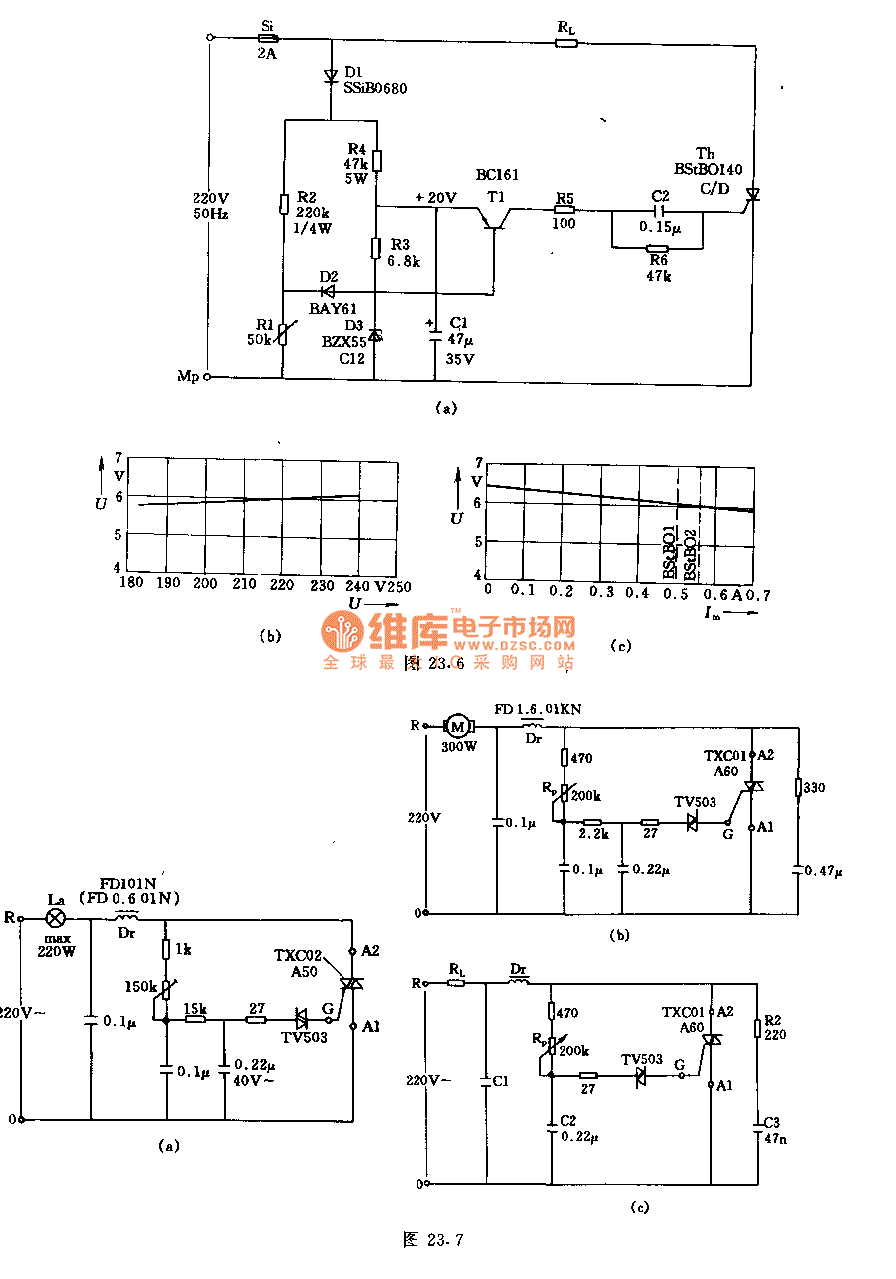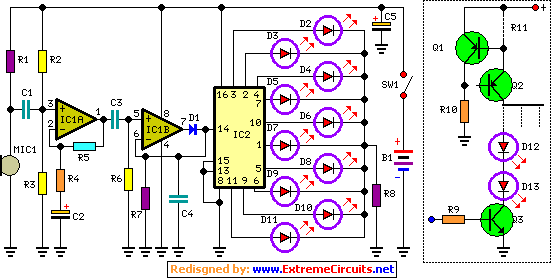
Circuit From the Past
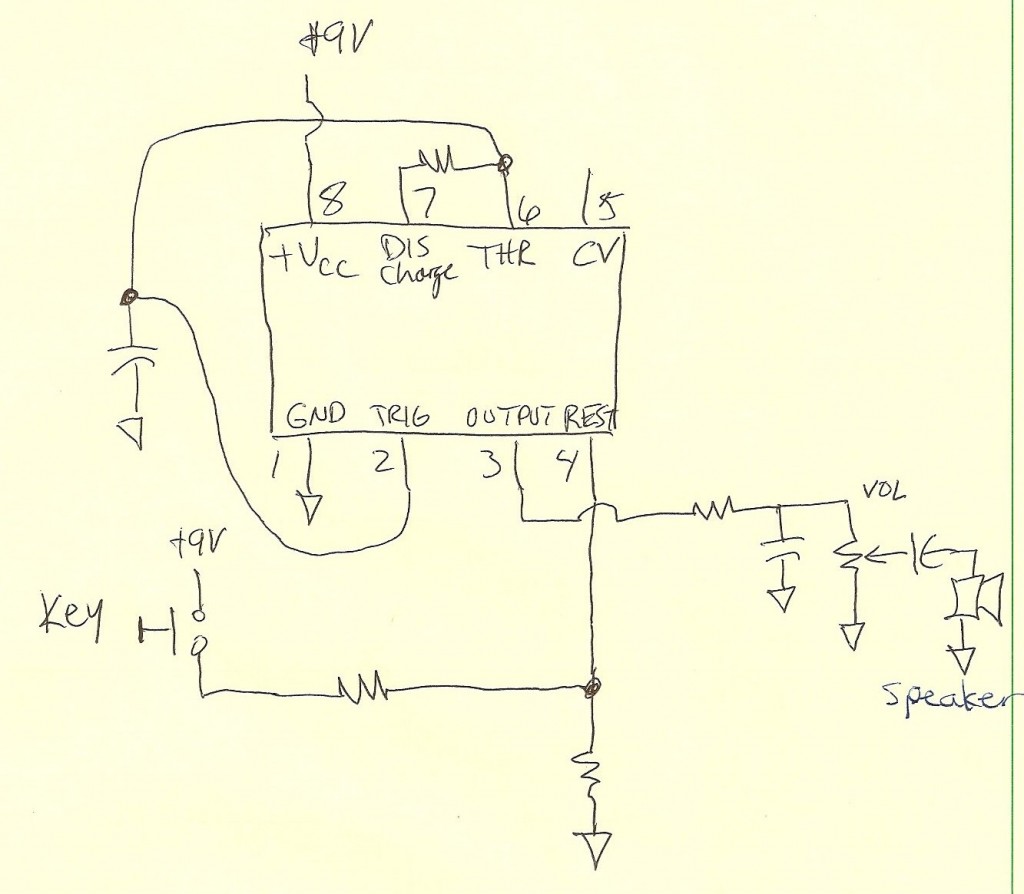
A code practice oscillator was built some time ago, and there is a vague recollection of the project. It featured a straight key that plugged directly into the key jack. Upon opening the device, a circuit board populated with through-hole components was found. After replacing the 9V battery with a fresh one, the circuit was activated. A small action on the key produced the sound of Morse Code. Curiosity about the design led to the discovery of one integrated circuit on the board, marked only with a proprietary part number. It is speculated that a 555 timer was used to construct the code practice oscillator, prompting a review of the online datasheet for the 555 timer and its pinout. The circuit is not fully documented, but there is enough information to confirm that the design is based on the 555 timer. A low-pass RC filter is present on the output of the 555 timer to smooth the square wave before it is sent to the speaker. Notably, the key connects to the reset pin on the IC, likely to ensure a clean startup of the oscillator and eliminate any frequency chirp.
The code practice oscillator is a fundamental device used by amateur radio operators for learning and practicing Morse Code. The heart of this circuit is the 555 timer, configured in astable mode to generate a continuous square wave output at a frequency determined by the resistors and capacitor connected to it. The frequency can be adjusted to suit the operator's practice needs, typically falling within the range of 300 Hz to 1000 Hz, which is ideal for Morse Code transmission.
The low-pass RC filter following the 555 timer output serves to convert the square wave into a more sinusoidal waveform, which is more pleasant to listen to when transmitted through a speaker. The filter's cutoff frequency is designed to allow the fundamental frequency of the Morse tone to pass while attenuating higher harmonics, resulting in a cleaner sound.
The integration of the straight key into the circuit allows for manual control of the oscillator. When the key is pressed, it connects to the reset pin of the 555 timer, momentarily stopping the oscillation. This feature ensures that each press of the key produces a clean tone without any initial frequency chirp, which could confuse the operator during practice. The reset functionality is critical for maintaining the integrity of the Morse signals being practiced, as it allows the operator to start and stop the tone precisely.
In summary, the code practice oscillator is a straightforward yet effective tool for Morse Code training, utilizing a 555 timer for signal generation, an RC filter for sound quality enhancement, and a straight key for user interaction, all housed within a compact and user-friendly design.A Code Practice Oscillator and that I must have built it some time ago. I had a vague recollection of the project. It certainly looked like something I might have built. There was a straight key in the same box that plugged right into the key jack. I opened the inside and found this circuit board populated with through-hole parts. Replacing the 9V battery with a fresh one, the circuit came to life. A little action on the key and the sound of Morse Code filled the room. I was curious about the design. There is one integrated circuit on the board but it was labeled only with a proprietary part number. What would I have used to built a code practice oscillator Probably a good old 555 timer, so I pulled up an online datasheet for that part and got its pin out. The circuit is not complete ” I just sketched out enough to confirm that the design was based on the 555 timer.
There is a lowpass RC filter on the 555 output to round out the square wave before it is fed to the speaker. It`s interesting that the key connects to the reset pin on the IC. I think this was to ensure a clean start up of the oscillator, to eliminate any frequency chirp. This entry was posted on 3 January 2010, 4:30 pm and is filed under Ham Radio. You can follow any responses to this entry through RSS 2. 0. Both comments and pings are currently closed. 🔗 External reference
The code practice oscillator is a fundamental device used by amateur radio operators for learning and practicing Morse Code. The heart of this circuit is the 555 timer, configured in astable mode to generate a continuous square wave output at a frequency determined by the resistors and capacitor connected to it. The frequency can be adjusted to suit the operator's practice needs, typically falling within the range of 300 Hz to 1000 Hz, which is ideal for Morse Code transmission.
The low-pass RC filter following the 555 timer output serves to convert the square wave into a more sinusoidal waveform, which is more pleasant to listen to when transmitted through a speaker. The filter's cutoff frequency is designed to allow the fundamental frequency of the Morse tone to pass while attenuating higher harmonics, resulting in a cleaner sound.
The integration of the straight key into the circuit allows for manual control of the oscillator. When the key is pressed, it connects to the reset pin of the 555 timer, momentarily stopping the oscillation. This feature ensures that each press of the key produces a clean tone without any initial frequency chirp, which could confuse the operator during practice. The reset functionality is critical for maintaining the integrity of the Morse signals being practiced, as it allows the operator to start and stop the tone precisely.
In summary, the code practice oscillator is a straightforward yet effective tool for Morse Code training, utilizing a 555 timer for signal generation, an RC filter for sound quality enhancement, and a straight key for user interaction, all housed within a compact and user-friendly design.A Code Practice Oscillator and that I must have built it some time ago. I had a vague recollection of the project. It certainly looked like something I might have built. There was a straight key in the same box that plugged right into the key jack. I opened the inside and found this circuit board populated with through-hole parts. Replacing the 9V battery with a fresh one, the circuit came to life. A little action on the key and the sound of Morse Code filled the room. I was curious about the design. There is one integrated circuit on the board but it was labeled only with a proprietary part number. What would I have used to built a code practice oscillator Probably a good old 555 timer, so I pulled up an online datasheet for that part and got its pin out. The circuit is not complete ” I just sketched out enough to confirm that the design was based on the 555 timer.
There is a lowpass RC filter on the 555 output to round out the square wave before it is fed to the speaker. It`s interesting that the key connects to the reset pin on the IC. I think this was to ensure a clean start up of the oscillator, to eliminate any frequency chirp. This entry was posted on 3 January 2010, 4:30 pm and is filed under Ham Radio. You can follow any responses to this entry through RSS 2. 0. Both comments and pings are currently closed. 🔗 External reference
Warning: include(partials/cookie-banner.php): Failed to open stream: Permission denied in /var/www/html/nextgr/view-circuit.php on line 713
Warning: include(): Failed opening 'partials/cookie-banner.php' for inclusion (include_path='.:/usr/share/php') in /var/www/html/nextgr/view-circuit.php on line 713
